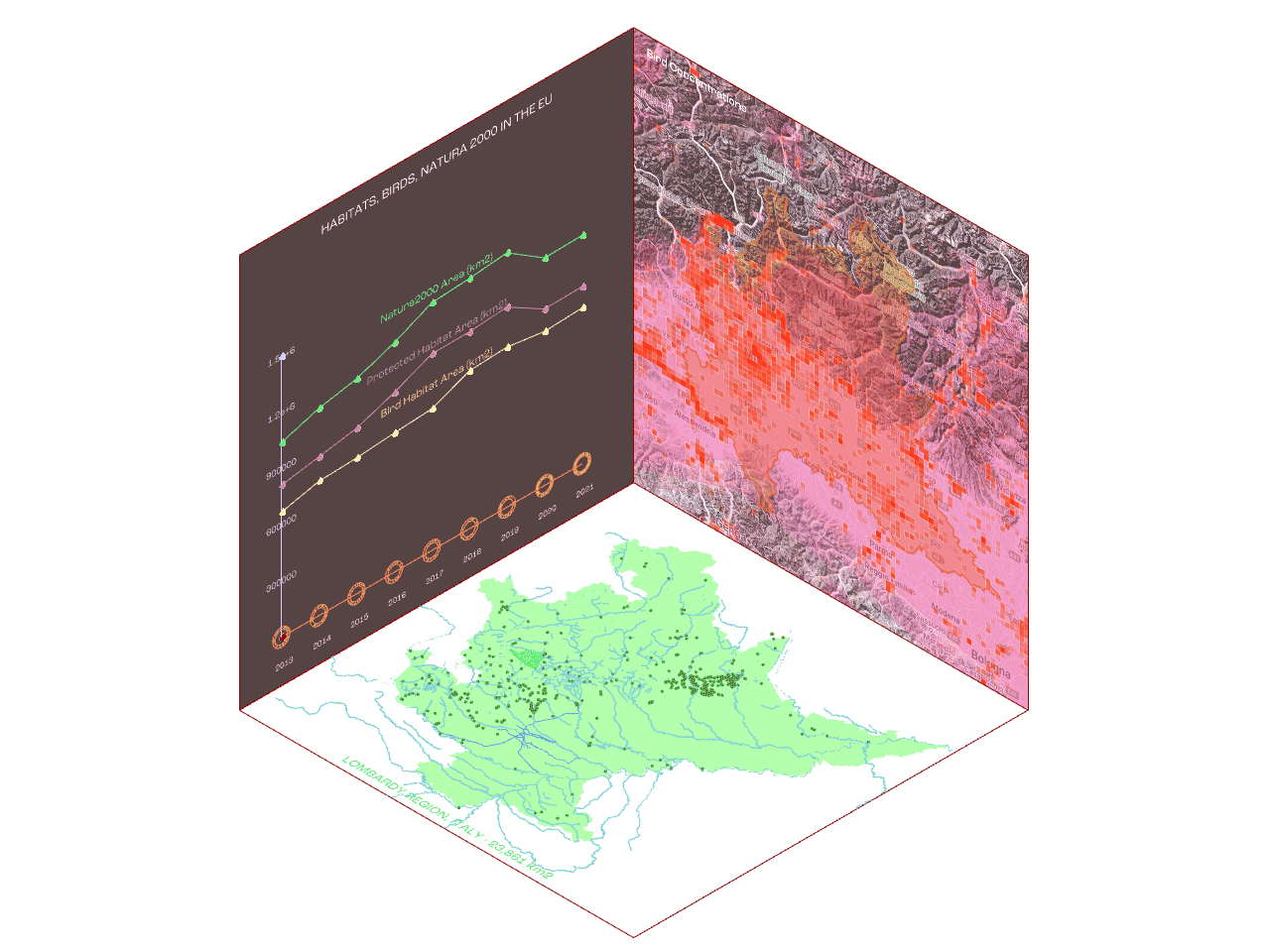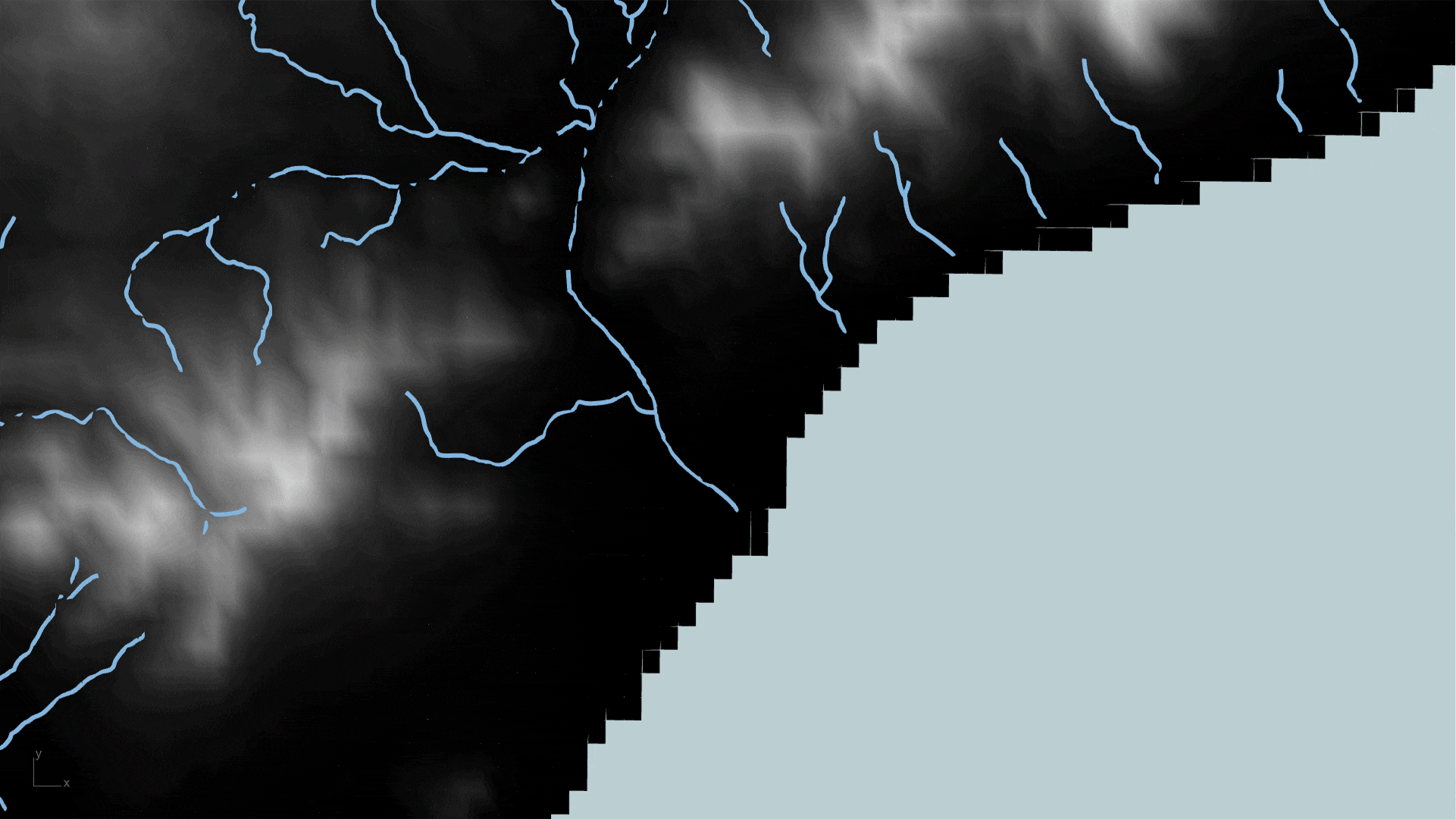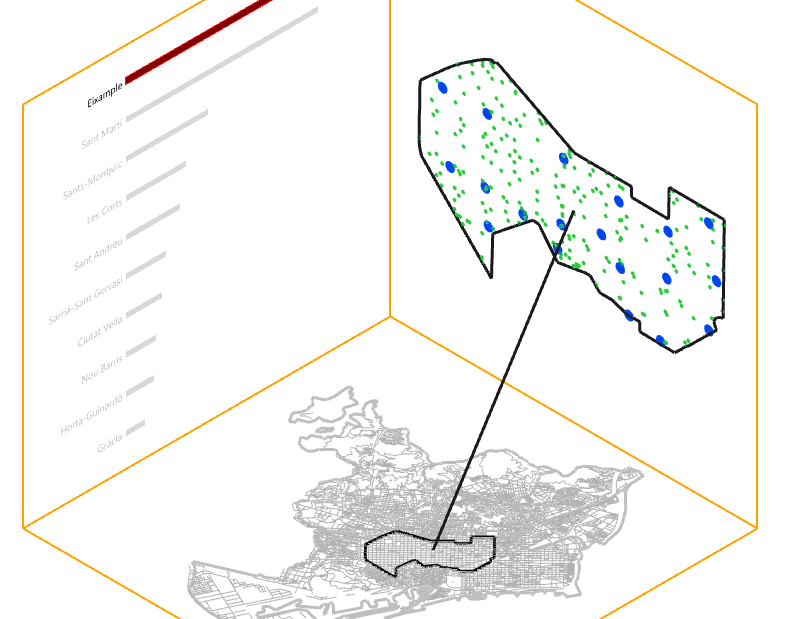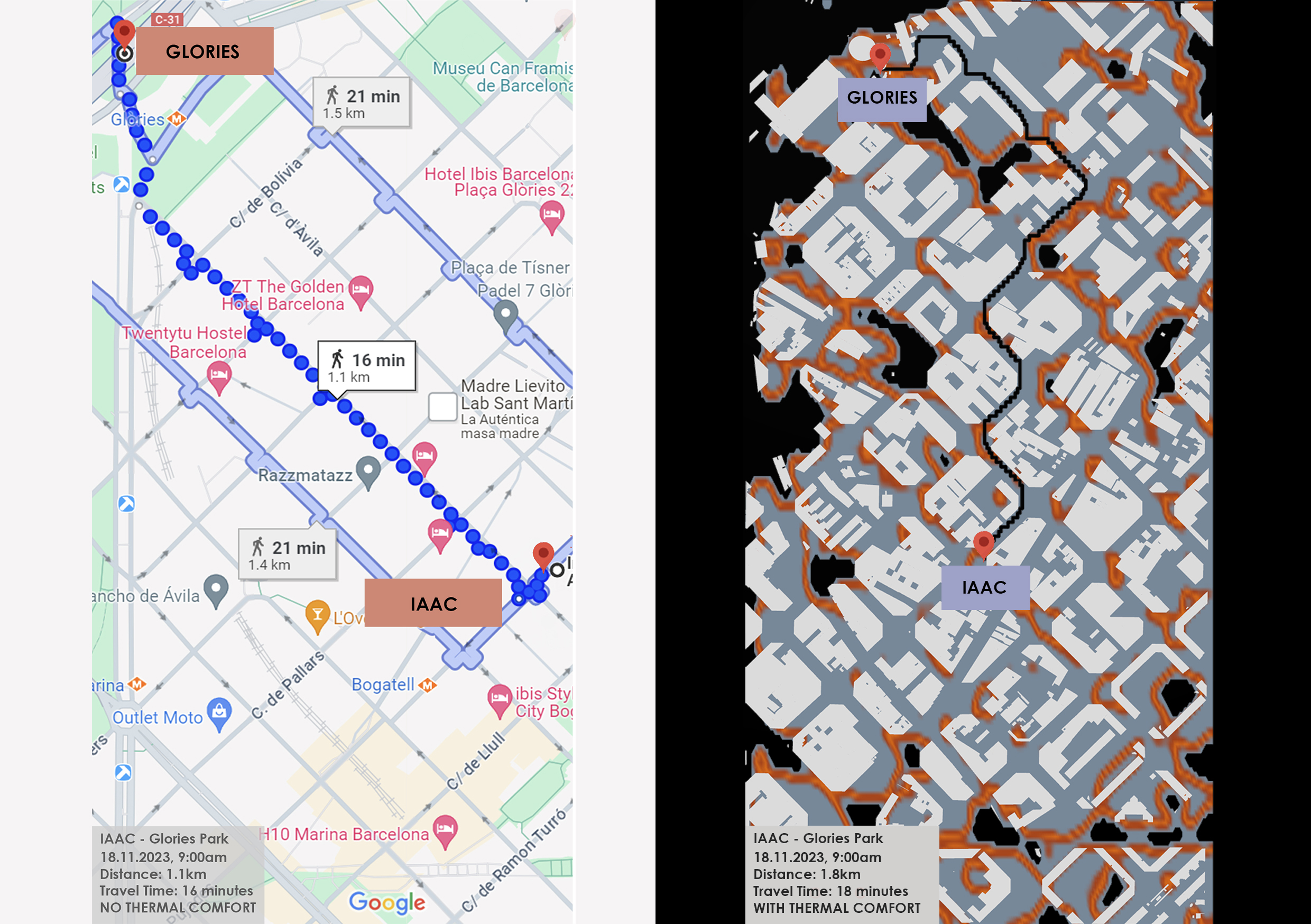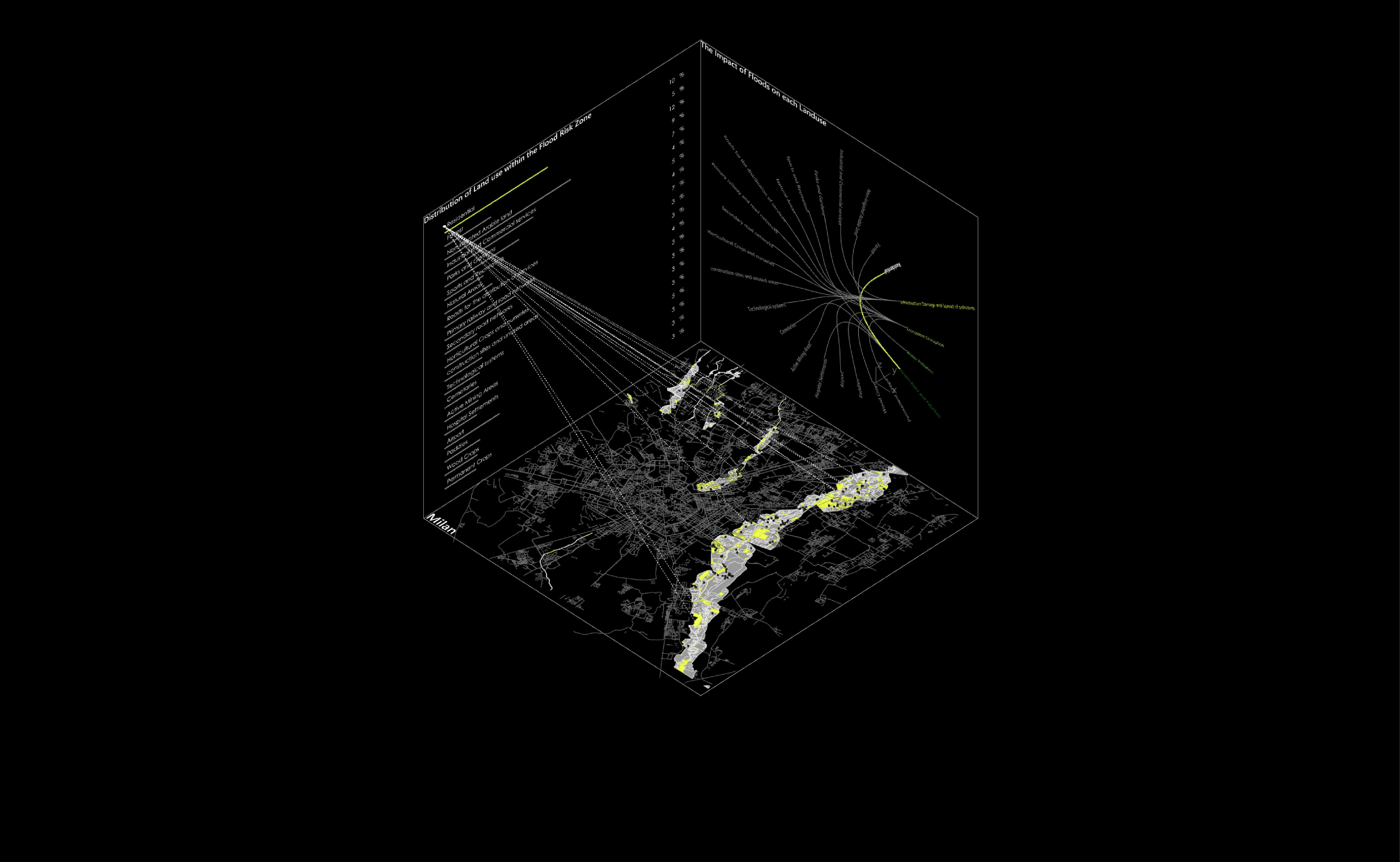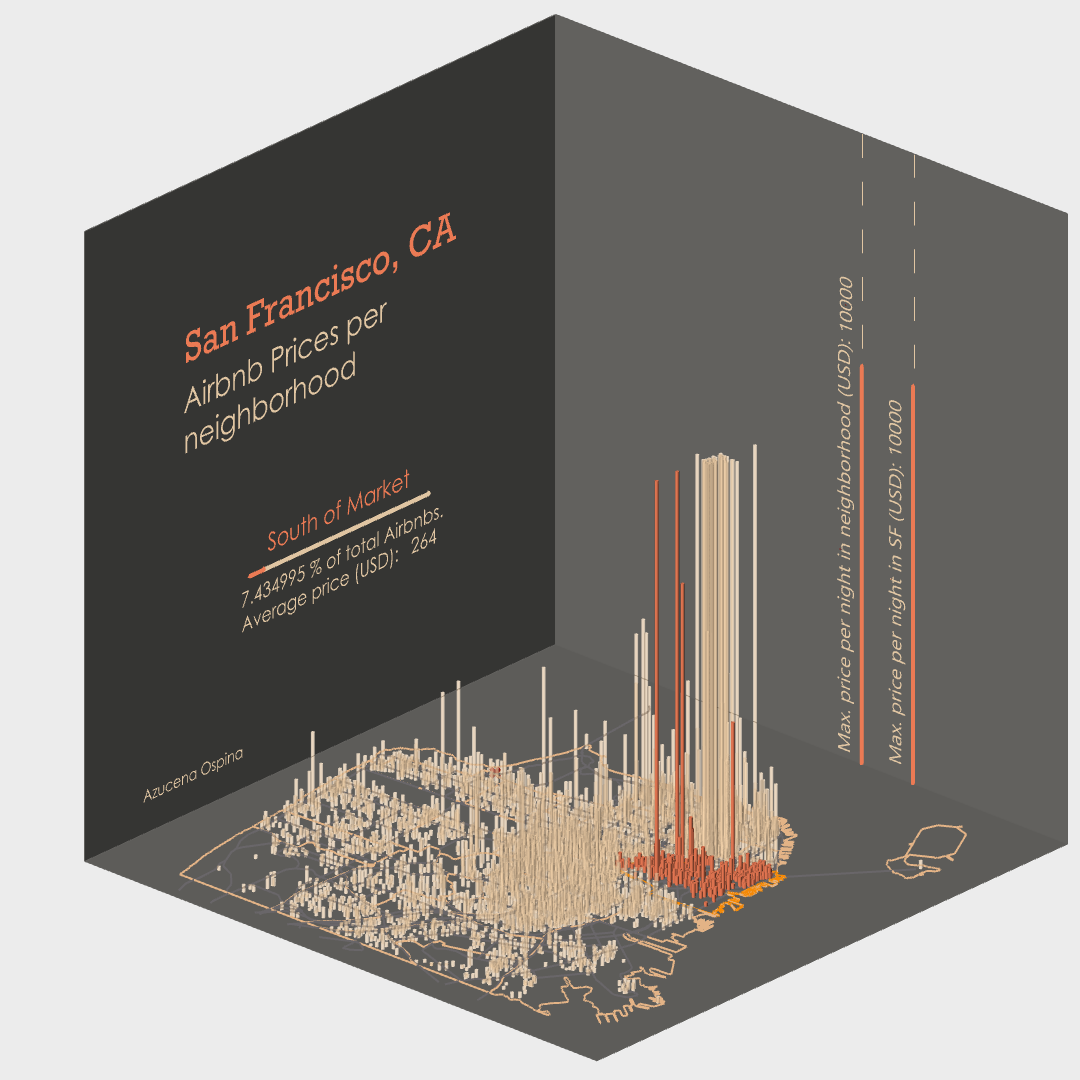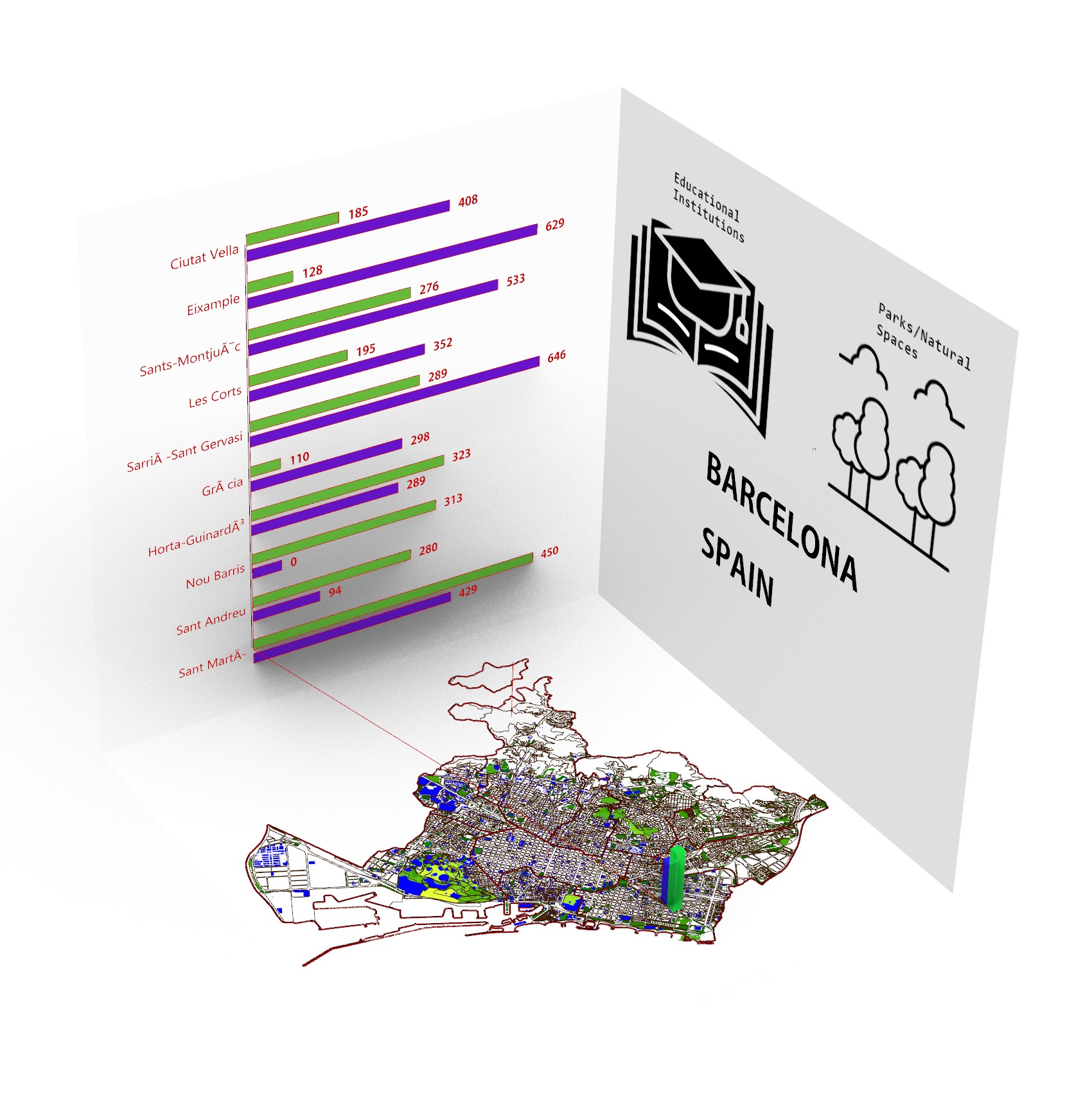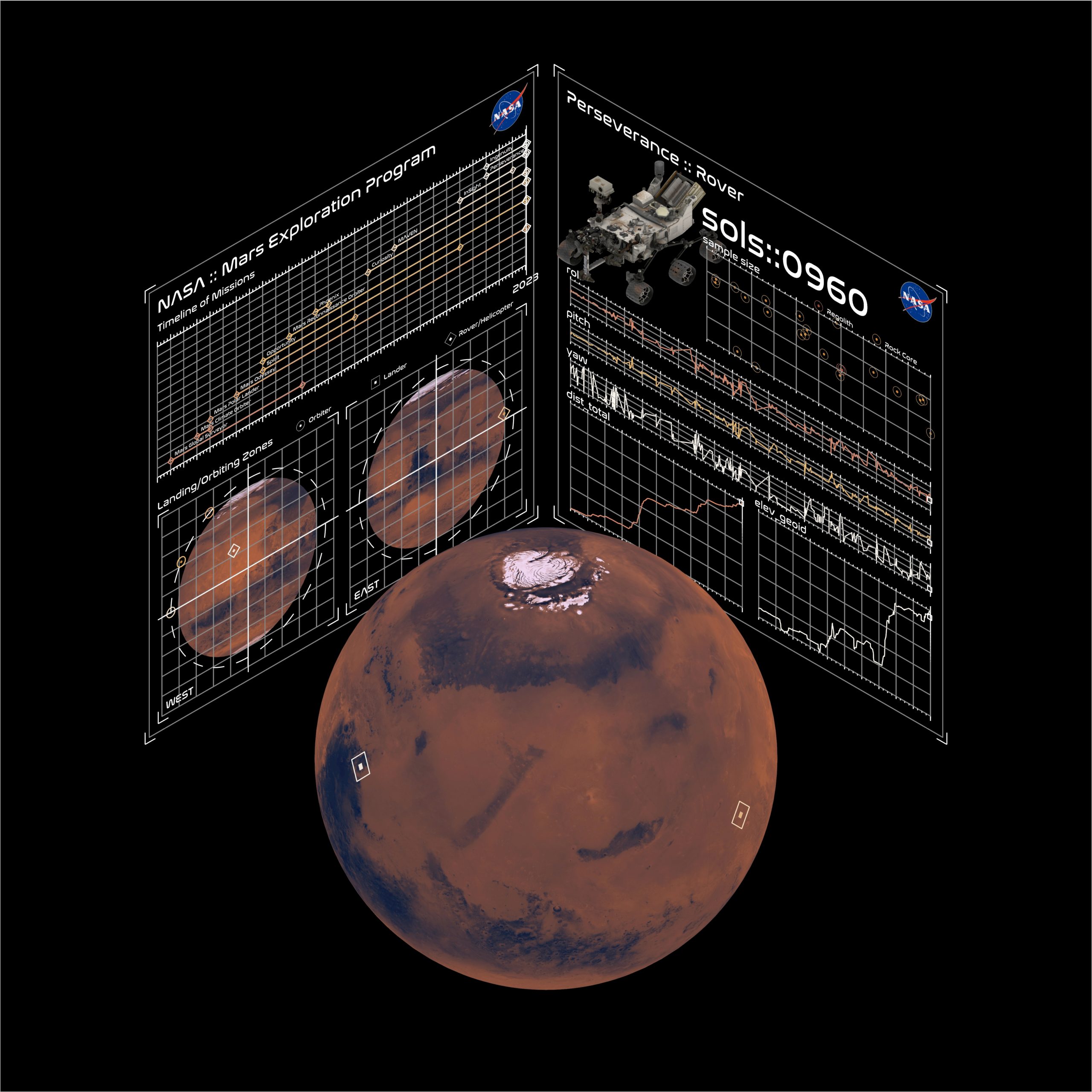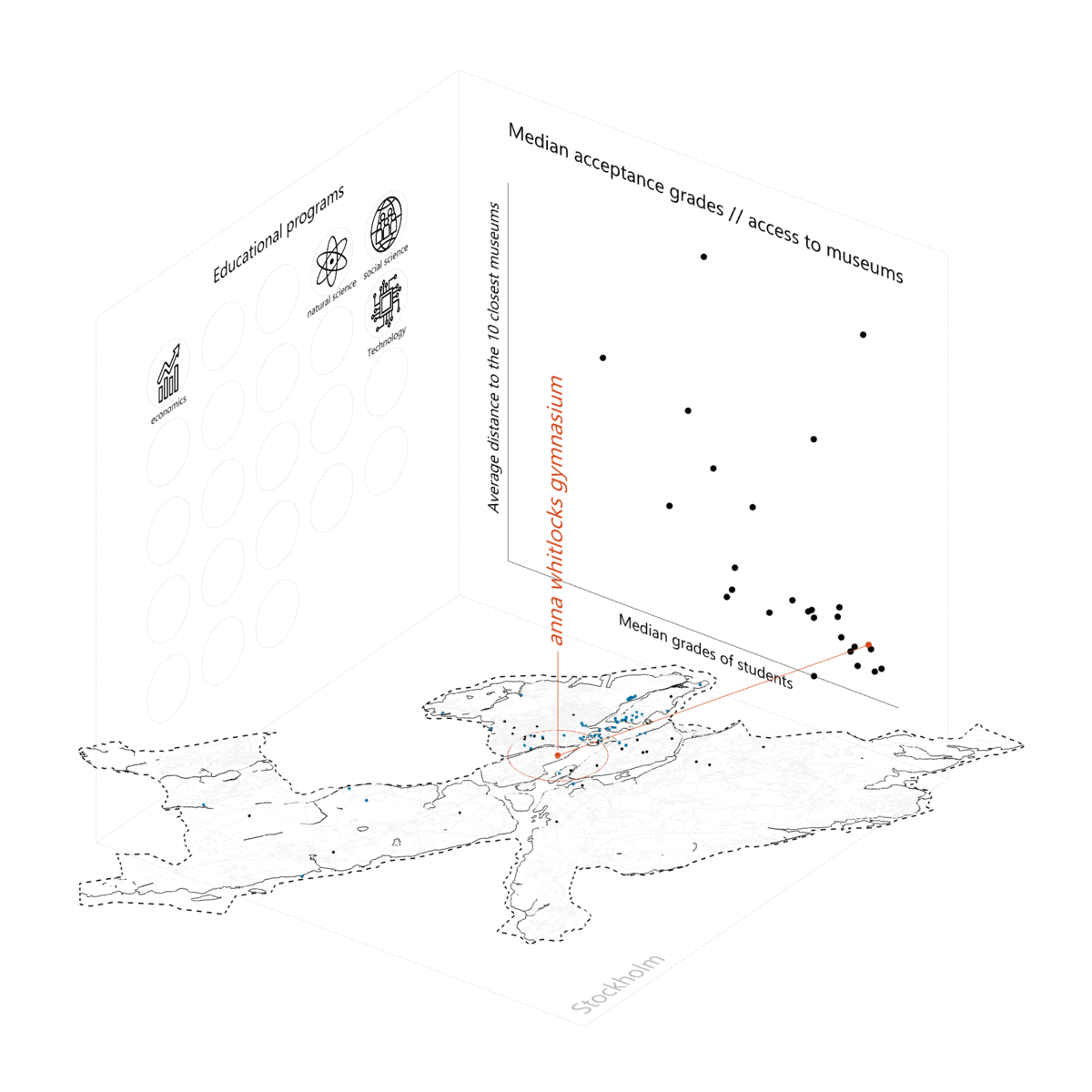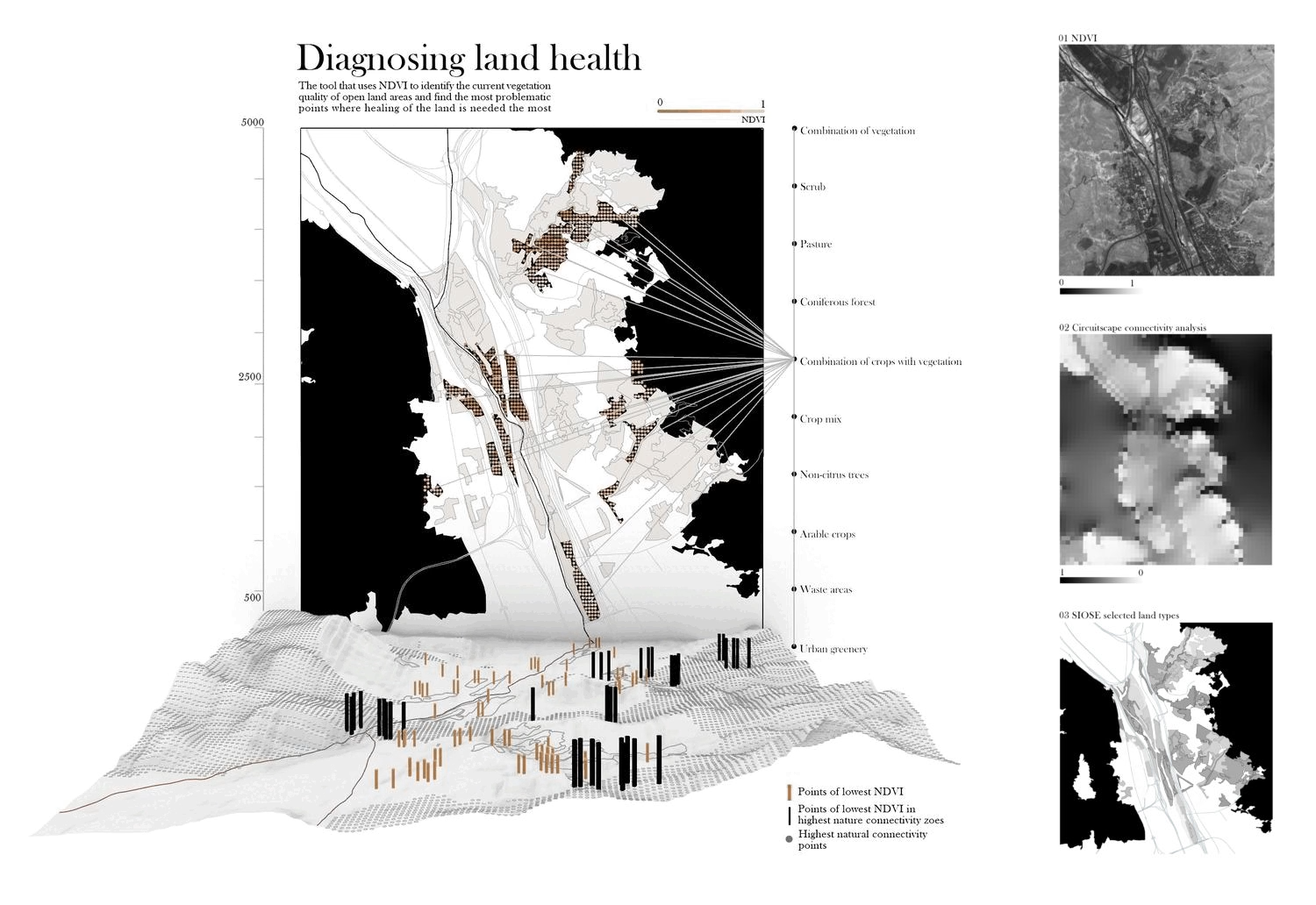
photo credits: Diagnosing land health (IAAC project 2022-23) by R. Petravi?i?t?
Description
Aim of the Computational Urban Design course is to empower students with the capacity to fully understand and exploit computational thinking in order to design complex algorithmic pipelines from raw data to design.
It exploits Grasshopper 3D as the main computational tool because of its intuitiveness, and its large use in the AEC and the planning field. Despite no prior knowledge of programming is required, throughout the course students will master advanced computational logics that will enhance their design workflows in accomplishing the challenges of this course, and of the future profession more in general.
After an initial introduction on the interface and the basics, the goal of the first part of the course is to establish a clear methodology to import and visualise data in Grasshopper. Participants will become familiar with the complexity of data-informed processes and will experience how simple computational logics can deeply alter the way in which they approach an urban project.
Consequently, the second part of the course will focus on the application of iterative computational processes to explore and create design solutions – and so – to process and create-by data. Participants will be challenged with a portfolio of advanced logics that they will independently analyse and explore in design exercises , achieving results that would remain inaccessible otherwise.
Lasty, the third section of the course will take advantage of the extensive availability of online machine learning models to investigate creative ways of using AI in design for future research directions. This part will comprise the creation and implementation of ad-hoc tools that will innovatively link design platforms and analytics to tackle urban challenges in innovative ways.
Learning Objectives
At course completion, the student will:
– fluently use Rhinoceros and Grasshopper 3D,
– implements design solutions taking advantages of computational tools
– manage and visualise complex geometries and data
– read and export data in various format
– integrate Grasshopper 3D with others software




